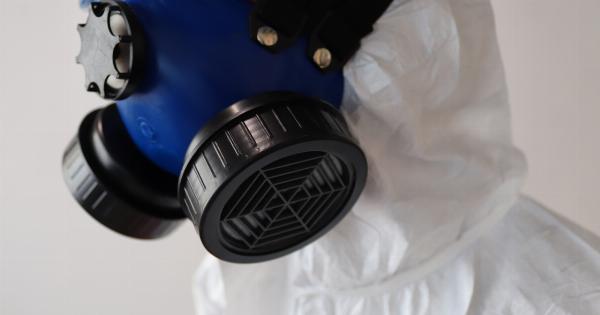Asthma is a chronic respiratory condition characterized by inflammation and narrowing of the airways, which can result in wheezing, coughing, shortness of breath, and chest tightness. It is a common condition affecting millions of individuals worldwide.
While the exact causes of asthma are still not fully understood, various risk factors have been identified, including genetics, allergies, air pollution, and occupational exposures. In recent years, there has been growing interest in whether working at night could potentially be a risk factor for asthma development or exacerbation.
This article aims to explore the existing evidence and shed light on the relationship between working at night and asthma.
Understanding Asthma
Before delving into the potential link between working at night and asthma, it is crucial to have a solid understanding of asthma itself.
Asthma is a chronic inflammatory disease of the airways, primarily involving the bronchial tubes, which carry air in and out of the lungs. It is characterized by episodes of airway inflammation, bronchoconstriction, and excessive mucus production, leading to the characteristic symptoms associated with asthma attacks.
The Prevalence of Asthma
Asthma is a prevalent condition worldwide, affecting people of all ages, genders, and ethnic backgrounds. According to the World Health Organization (WHO), approximately 235 million individuals worldwide are currently affected by asthma.
The prevalence of asthma has been steadily increasing over the past few decades, particularly in developed countries. This rise in asthma prevalence has spurred research into various environmental and occupational risk factors that may contribute to its development.
The Night Shift: An Overview
With the advent of globalized industries and the need for 24-hour operations, there has been a significant increase in the number of workers employed in night shift positions.
The night shift refers to working hours outside of the standard daytime hours of 9 am to 5 pm. Night shift workers often undergo a disruption in their circadian rhythm, the internal body clock that regulates various physiological processes. This disruption can have wide-ranging effects on both physical and mental well-being.
The Link Between Working at Night and Health
Several studies have investigated the potential health effects of working at night, ranging from sleep disturbances and increased risk of cardiovascular disease to hormonal imbalances and mood disorders.
Disruptions in the sleep-wake cycle can lead to chronic sleep deprivation and alterations in various biological processes, increasing the susceptibility to adverse health outcomes. However, the relationship between working at night and asthma remains a subject of scientific debate.
Evidence Supporting the Night Shift-Asthma Link
While the specific mechanisms linking working at night and asthma are not yet fully understood, some studies have suggested a potential association.
A study published in the American Journal of Respiratory and Critical Care Medicine reported an increased risk of asthma among night shift workers. The study found that the odds of developing asthma were higher in nurses who worked exclusively at night compared to those working exclusively during the day.
Biological Plausibility
One hypothesis posits that the disruption of the circadian rhythm caused by working at night could affect immune function and airway inflammation, potentially contributing to the development or exacerbation of asthma.
Circadian rhythm disruption has been shown to influence various immune parameters and inflammatory markers, which may impact the respiratory system. Additionally, nocturnal exposure to environmental pollutants and allergens could play a role in triggering or worsening asthma symptoms in susceptible individuals.
Confounding Factors
It is essential to consider potential confounding factors when evaluating the relationship between working at night and asthma.
Night shift workers may be more likely to engage in other risk behaviors, such as smoking or living in areas with increased air pollution, which could independently contribute to asthma development. Additionally, the stress associated with working irregular hours and the social and economic factors associated with shift work can also affect overall health, potentially confounding any observed relationship.
Contradictory Findings
While some studies have reported a positive association between working at night and asthma, others have found no significant link.
A Danish population-based cohort study with a large sample size provided little evidence to support an increased risk of asthma among night shift workers. Factors such as study design, population characteristics, and differences in asthma ascertainment methods may contribute to the conflicting findings.
Occupational Asthma and Night Shift Work
Occupational asthma refers to asthma that is specifically caused or worsened by a particular workplace exposure.
Some occupations, particularly those involving exposure to respiratory irritants or sensitizing agents, have a higher prevalence of asthma among workers. While specific occupational exposures may be more relevant than the timing of work, the night shift could potentially influence exposure levels due to variations in work tasks and environmental conditions.
Workplace Interventions and Mitigation Strategies
Regardless of the exact relationship between working at night and asthma, it is crucial to prioritize worker health and safety.
Employers should implement adequate measures to minimize exposure to occupational asthma triggers, regardless of the shift workers are assigned. Regular monitoring of air quality, proper use of personal protective equipment, and education on asthma prevention can play essential roles in reducing the risk of asthma among night shift workers.
Conclusion
While the evidence surrounding the relationship between working at night and asthma is still inconclusive, it is important to consider the potential health risks associated with night shift work.
Further research is needed to elucidate the underlying mechanisms, explore potential confounding factors, and develop effective preventive strategies. In the meantime, employers and individuals should prioritize appropriate workplace interventions, promote healthy lifestyle choices, and ensure proper management of asthma symptoms to protect the respiratory health of night shift workers.






























